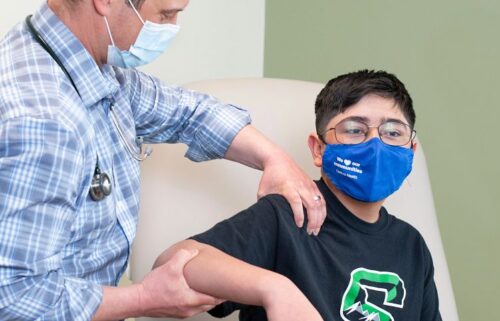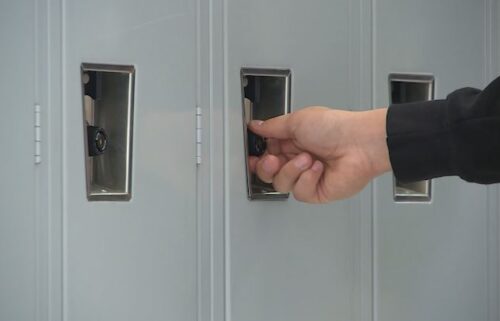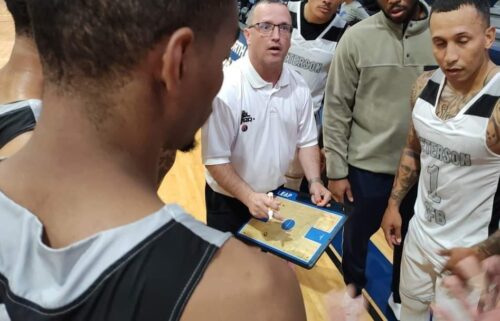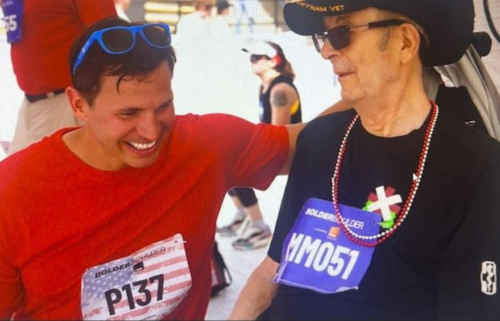A Las Vegas woman was found strangled to death in 1994. Decades later, a nonprofit group helped identify her killer
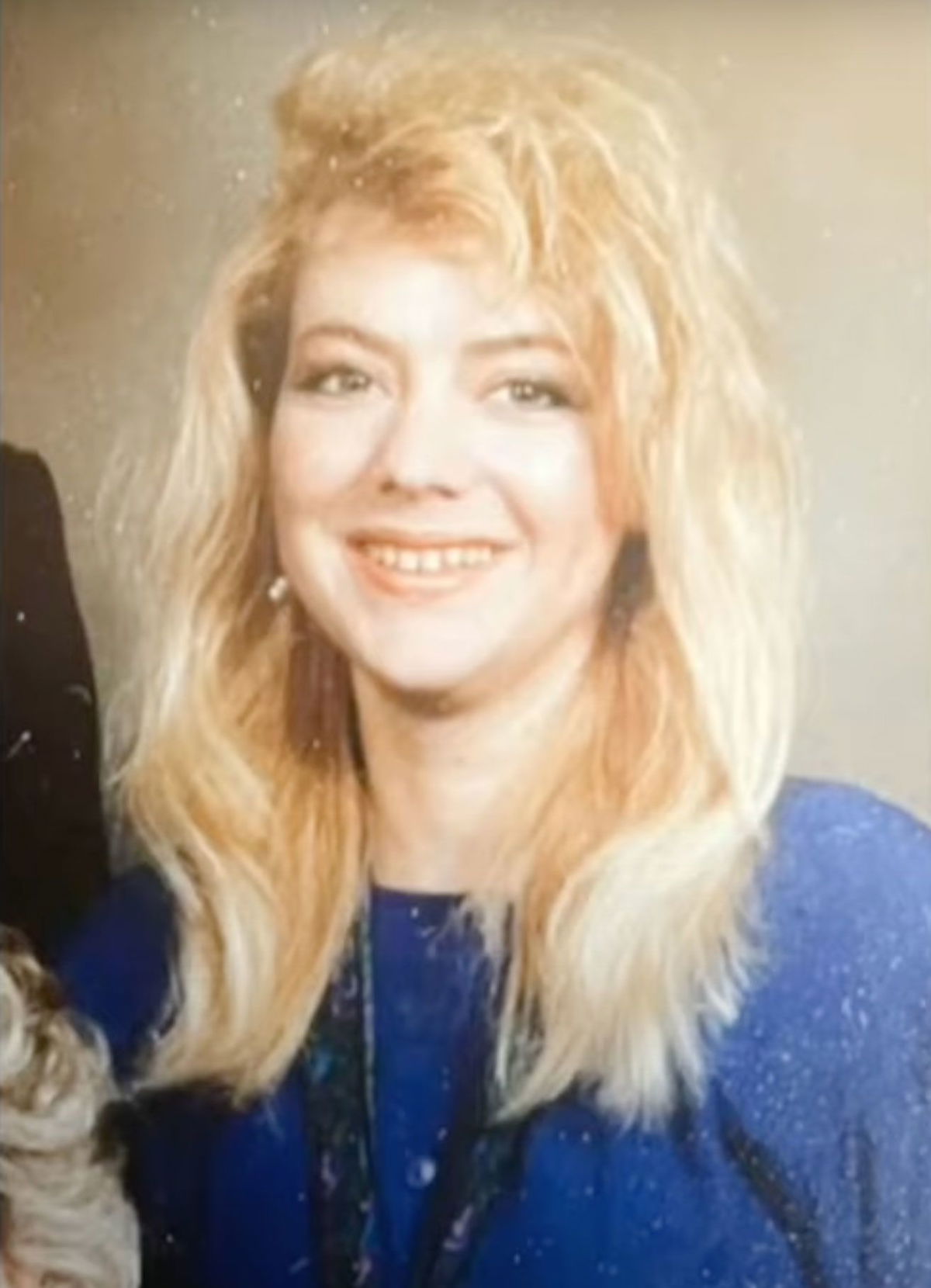
Clark County Commissioner Michael Naft
By Alaa Elassar, CNN
(CNN) — Melonie White was a young mother of a baby boy, a stylish lover of fashion and on an inspired search for a new career when her body was found strangled and lifeless.
White was 27 years old when hikers found her body near Lake Mead National Recreation Area, around 10 miles east of Las Vegas, on August 27, 1994. Nearly 30 years to the day she was killed, the Las Vegas Metropolitan Police Department identified White’s suspected killer as Arthur Joseph Lavery using DNA testing and forensic genetic genealogy. He died in 2021, according to police.
After White’s body was found, an autopsy ruled the cause of her death as homicide with evidence of strangulation and blunt force trauma to the head, according to police. She had been strangled with a ligature, bludgeoned and dragged by a car into the desert wash, police said. At the time of the investigation, police tracked down multiple leads, but no suspect was ever identified. The case went cold.
For decades, her grieving family was left with no answers and a devastating desire for the truth.
In 2010, cold case detectives recovered additional items and sent them for DNA testing, leading to the DNA profile of a male suspect. But a suspect was not identified until 2021 with the assistance of the Las Vegas-based nonprofit Vegas Justice League. The nonprofit paid for the costs of sending the case to a laboratory that used DNA testing and genetic genealogy to successfully identify Lavery as the suspected killer.
Crowdfunded crime solving
Founded in 2020 by entrepreneur Justin Woo, the Vegas Justice League – and his nationwide initiative Project Justice – has helped solve 41 cold cases across the country, including nine murders in Las Vegas. The initiative provides the funding for forensic genetic genealogy, a law enforcement technique that uses DNA analysis and genealogical research to identify suspects in criminal cases or “Jane Doe” victims whose identities were never determined.
Funding for the cases comes from donations from the six members of the Justice League, including Woo and his wife, Lydia Ansel, as well as donations from the community. Once enough money is raised for a case, the nonprofit alerts law enforcement, who then send the case to a lab that specializes in forensic genetic genealogy such as Othram, a Texas-based laboratory that works exclusively with law enforcement.
On August 26, 2024, about three years after law enforcement sent the case to Othram, White’s suspected killer was finally identified.
“It’s nice to have closure on this,” Walter White, Melonie’s brother, said in a news conference on October 22. “The effect of her death really shattered my mother. That was probably the biggest ongoing thing for our family was that my mom was just absolutely destroyed, it took a long time for that to get back to kind of a normal situation.”
White’s other younger brother, Jason White, also spoke during the news conference and recalled the day he learned his sister had been killed. He was an Arizona State University student and it was the Friday before he started his semester when he received the call that shattered their family.
“I just want to say how grateful we are to the officers of the Las Vegas Metropolitan Police Department for never giving up on finding Melonie’s killer,” Jason White said while choking back tears.
“We’re very, very grateful for the contributions of the Vegas Justice League whose donation for DNA testing by the police allowed the police to crack the case. We will always miss Melonie and believe that the solving of her murder will help bring a measure of peace to her and all of us.”
Las Vegas Homicide Lieutenant Jason Johansson also thanked the Justice League for their “unwavering support in helping provide our community, friends, and family” with the assistance in solving case investigations.
“It is their support that has directly led to the closure now of nine cold cases that would have never been solved without their assistance,” Johansson said.
Putting the puzzle together
Vegas Justice League has also funded the ongoing DNA testing for at least 82 other ongoing cases. It costs about $7,500 per case, Woo says, pointing to the million dollar sequencing machines used for testing and the staff of geneticists and researchers who then help put all the puzzle pieces together.
“We have every belief that every case will be solved, but sometimes it takes a long time, months or even years, with the research they’re doing,” Ansel told CNN.
Investigators use genetic genealogy to solve cold cases by using suspect DNA collected from a crime scene, analyzing it, and converting it into a raw data file. The suspect’s DNA file is then uploaded to databases like GEDMatch, which is used by people who send in their genetic DNA testing kits to discover their ancestry and find relatives.
GEDMatch analyzes the suspect’s DNA data files and locates people who uploaded their DNA data files to the website and are related to the suspect. A genetic genealogist then builds out an extended family tree of the person who uploaded their DNA to try to locate where in the family tree the suspect is.
Investigators then collect DNA from members of the extended family until DNA from a relative matches the DNA found at the crime scene, leading to an arrest.
The new and powerful forensic method has spread widely among law enforcement investigators over the past few years. It has been used to crack some of the country’s most frustrating cold cases, most notably the arrest of the Golden State Killer in 2018. Joseph James DeAngelo was arrested in 2018 in a Sacramento, California, suburb on suspicion of being the man who killed 12 people and raped more than 50 women in the 1970s and 1980s.
The idea for Vegas Justice League started when Woo learned about Othram and saw that they were crowdfunding for cases. Woo decided he would sponsor one, which ended up solving the case of Stephanie Isaacson, a 14-year-old who was abducted on her way to school, sexually assaulted and beaten to death in 1989.
“It started off as just trying to help our local community,” Woo said. “When we did the first one, we didn’t know what was going to happen. It took seven months. But when we saw the results, the amount of impact that we could have, we just couldn’t stop and made it our mission.”
The nonprofit’s work has not gone unnoticed. The Vegas Justice League was presented with a key to the Las Vegas Strip in honor of their efforts in solving cold murder cases on October 30 at a ceremony where the LVMPD was also in attendance.
Behind every unresolved murder case is a family that never stopped mourning or yearning for justice. While solving a case will not heal the deep wounds of their loss, it can provide a sense of closure. Ansel believes that’s the goal they’re striving to achieve.
“It’s such a mix of feelings, where you feel devastated with them over the loss of their child who will never come back,” Ansel said. “But then you feel gratitude that they got answers and some kind of ending to this sometimes 30, 40 year nightmare.”
The-CNN-Wire
™ & © 2024 Cable News Network, Inc., a Warner Bros. Discovery Company. All rights reserved.
